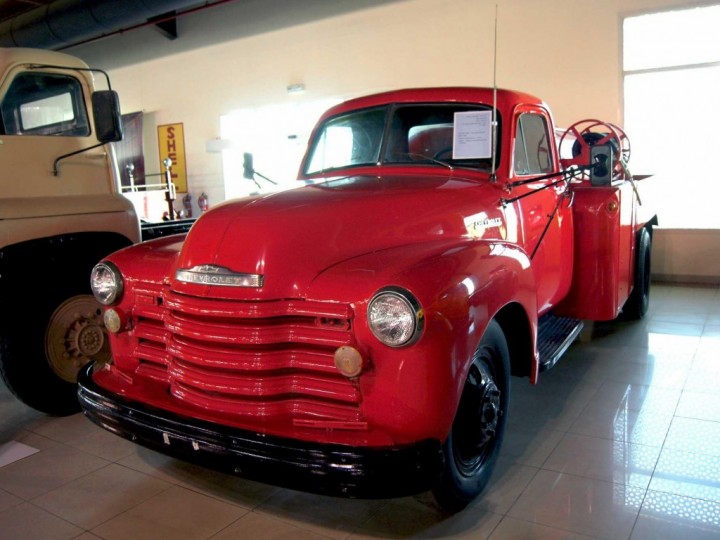1951 Chevrolet series 4000
(Tanker)
www.trucksplanet.com
1948 was the last year, when the cars Chevrolet used a prewar style. That is why the appearance of a new generation of the Chevrolet truck series became the biggest surprise. So the trucks in particularly, not the cars came to be the first completely new Chevrolet of the pastwar period. The design of the new trucks had nothing in common with the prewar models, even the bamper was different. The headlights were integrated into the rounded front fenders, and the marker lights were built in the grille. The radiator grill itself was painted the color of the body. It consisted of five horizontal rails, the edges of which came close to the lower boundary of the hood and headlights. The hood became hinged of the “alligator” type, and the side panels of the hood did not tilt any more. The cab also got more rounded forms and its inside became larger, and the decorative molding was replaced straightway under the side window. The wind screen was still two-piece, but did not open already. The big logo Chevrolet above the grille was stamped on the stainless steel. Less in size logos Chevrolet with the truck series designation were on the hood sidewalls.
Practically nothing changed under the hood. The 90 hp 3.5L six-cylinder engine was offered for light trucks, and 93 hp 3.8L engine was offered for heavier versions. In 1950 a new 7-tonne series 6500 was introduced, which was built on the chassis with a wheelbase of 4,550 mm. In 1951 all heavy trucks Chevrolet received a new 105 hp engine, four-speed transmission, and many of them got double-speed back axle as well. The new indexing, which was applied since that year, was all the same rather tangled. Each model had not only 4-place digit index, but also letter-digit code for designation of the series.






